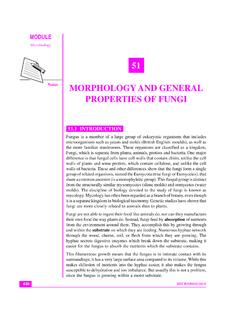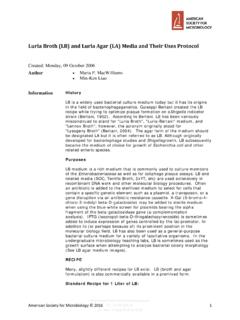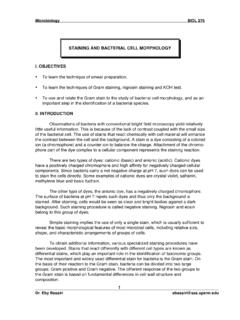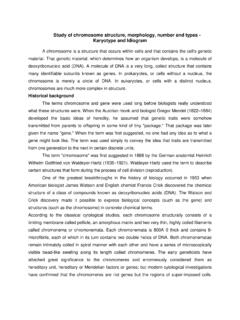Transcription of Urban Planning and Urban Design - Columbia University
1 139 Urban Planning and Urban DesignCoordinating Lead Author Jeffrey Raven (New York)Lead AuthorsBrian Stone (Atlanta), Gerald Mills (Dublin), Joel Towers (New York), Lutz Katzschner (Kassel), Mattia Federico Leone (Naples), Pascaline Gaborit (Brussels), Matei Georgescu (Tempe), Maryam Hariri (New York)Contributing AuthorsJames Lee (Shanghai/Boston), Jeffrey LeJava (White Plains), Ayyoob Sharifi (Tsukuba/Paveh), Cristina Visconti (Naples), Andrew Rudd (Nairobi/New York)5 This chapter should be cited asRaven, J., Stone, B., Mills, G.
2 , Towers, J., Katzschner, L., Leone, M., Gaborit, P., Georgescu, M., and Hariri, M. (2018). Urban Planning and Design . In Rosenzweig, C., W. Solecki, P. Romero-Lankao, S. Mehrotra, S. Dhakal, and S. Ali Ibrahim (eds.), Climate Change and Cities: Second Assessment Report of the Urban Climate Change Research Network. Cambridge University Press. New York. 139 Climate Change and Cities140 Embedding Climate Change in Urban Planning and Urban DesignUrban Planning and Urban Design have a critical role to play in the global response to climate change.
3 Actions that simul-taneously reduce greenhouse gas (GHG) emissions and build resilience to climate risks should be prioritized at all Urban scales metropolitan region, city, district/neighborhood, block, and building. This needs to be done in ways that are responsive to and appropriate for local FindingsUrban planners and Urban designers have a portfolio of cli-mate change strategies that guide decisions on Urban form and function: Urban waste heat and GHG emissions from infrastructure including buildings, transportation, and industry can be reduced through improvements in the efficiency of Urban systems.
4 Modifying the form and layout of buildings and Urban dis-tricts can provide cooling and ventilation that reduces energy use and allow citizens to cope with higher temperatures and more intense runoff. Selecting low heat capacity construction materials and reflec-tive coatings can improve building performance by managing heat exchange at the surface. Increasing the vegetative cover in a city can simultaneously lower outdoor temperatures, building cooling demand, run-off, and pollution, while sequestering MessagesIntegrated climate change mitigation and adaptation strategies should form a core element in Urban Planning and Urban Design , taking into account local conditions.
5 This is because decisions on Urban form have long-term (>50 years) consequences and thus strongly affect a city s capacity to reduce GHG emissions and to respond to climate hazards over time. Investing in miti-gation strategies that yield concurrent adaptation benefits should be prioritized in order to achieve the transformations necessary to respond effectively to climate needs to be given to how regional decisions may affect neighborhoods or individual parcels and vice versa, and tools are needed that assess conditions in the Urban environ-ment at city block and/or neighborhood is a growing consensus around integrating Urban plan-ning and Urban Design , climate science.
6 And policy to bring about desirable microclimates within compact, pedestrian- friendly built environments that address both mitigation and Planning and Urban Design should incorporate long-range mitigation and adaptation strategies for climate change that reach across physical scales, jurisdictions, and electoral timeframes. These activities need to deliver a high quality of life for Urban citizens as the key performance outcome, as well as climate change 5 Urban Planning and Urban IntroductionKey concepts, challenges, and pathways for adaptation and mitigation of climate change through recent advances in the Planning and Design of cities are reviewed in this chapter.
7 Section presents the concept of integrated mitigation and adaptation as a framework and introduces the factors of Urban -scale form and function as influences on Urban climate. Section explains how Urban microclimates are embedded in zones of human occupation and links metropolitan-scale urbanization with heat and storm-water impacts. Section focuses on Planning and Design innovations that can be applied to achieve integrated mitigation and adaptation. Section describes a process for implementing climate-responsive Urban Planning and Urban Design .
8 Section identifies key climate-resilient Urban Planning and Urban Design stakeholders and a set of value propositions to engage a broader constituency. Section describes the challenges in cross-sector linkages between the scientific, Design , and policy-making communities. Section identifies knowledge gaps and future research opportunities, and Section presents conclusions and recommendations for practitioners and policy-makers. Case Studies are distributed throughout the chapter to illustrate on-the-ground, effective implementations of the Planning and Design strategies Framework for Sustainable and Resilient CitiesUrban Planning and Urban Design encompasses multiple dis-ciplines, providing critical input to inform systems, manage-ment, and governance for sustainability and resilience to climate change (see Box ).
9 They configure spatial outcomes that yield consequences for and constitute responses to climate change (see Figure ). The spatial form of a city from the scale of the metropolitan region to the neighborhood block strongly prede-termines per capita greenhouse gas (GHG) emissions. With each 10% reduction in Urban sprawl, per capita emissions are reduced by 6% (Laidley, 2015). Although compact Urban form generally contributes positively to mitigation, it can paradoxically exacer-bate local climate effects, requiring creative forms of adaptation.
10 Research in this area is expanding, and, as a result, Planning and Design strategies are increasingly providing win-win solutions for compact Urban , not all existing Urban areas are compact (see Figure ). Low-density areas continue to contribute dis-proportionately to emissions because of the excess mobility required by long distances, few alternatives to the private car, and scant possibilities for shared building envelopes. Whether such patterns are the result of Planning or a lack thereof, it is 1.








